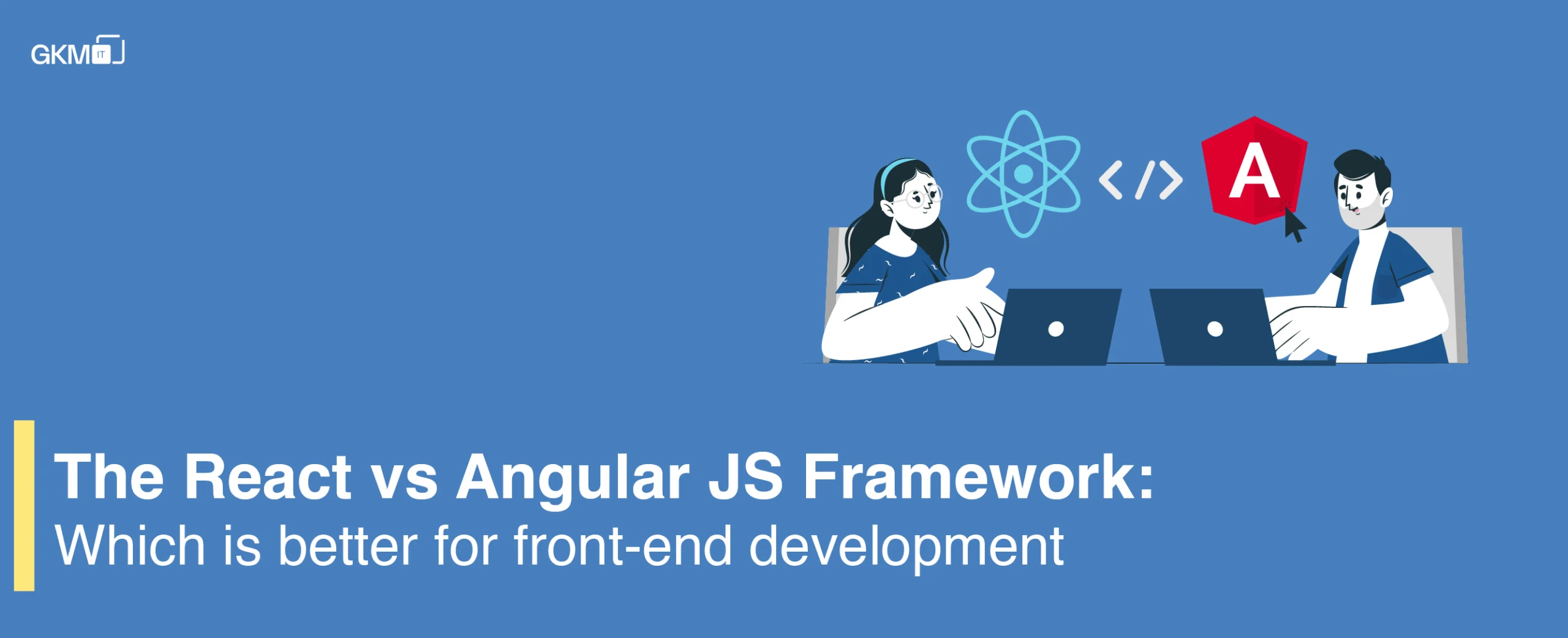
The React vs Angular JS Framework: Which is better for front-end development
When it comes to front-end development, two giants in the field often spark debate: React and Angular. Both are powerful, widely-used frameworks, but choosing between them can be tricky. In this article, we’ll break down the key differences between Angular and React, examine their advantages, and help you decide which framework might be best for your development needs in 2025.
What are React and Angular JS?
React is a JavaScript library developed by Facebook for building user interfaces, specifically for single-page applications where content needs to change dynamically without reloading the page. React is known for its simplicity, flexibility, and component-based architecture.
Angular, on the other hand, is a full-fledged front-end framework maintained by Google. It’s designed for building dynamic web applications with a strong emphasis on scalability and robustness. Angular provides two-way data binding and dependency injection, making it a more comprehensive solution for developers who want a ready-to-use toolkit.
Key Differences Between Angular and React
Feature |
React |
Angular |
|---|---|---|
| Type | JavaScript Library | Full-fledged Framework |
| Architecture | Component-based | MVC (Model-View-Controller) |
| Data Binding | One-way data binding | Two-way data binding |
| Learning Curve | Easier for beginners | Steeper learning curve |
| DOM Handling | Virtual DOM | Real DOM |
| Performance | Faster rendering due to Virtual DOM | Slower compared to React, but better for large-scale apps |
| Community Support | Large, especially for startups | Strong support from enterprise developers |
| Flexibility | Requires additional libraries for routing, state management, etc. | Comes with built-in solutions |
| Release Schedule | More frequent updates | Less frequent but more stable releases |
Performance: React vs Angular 2025
Performance is one of the most important factors when choosing between React and Angular.
- React leverages the virtual DOM, which ensures that only the necessary components are updated, leading to faster performance. This makes React ideal for applications that require frequent updates or data changes.
- Angular, using the Real DOM, tends to perform slower in comparison when handling heavy data updates. However, Angular’s built-in solutions like Ahead-of-Time (AOT) compilation and tree shaking optimize performance, making it suitable for large-scale applications.
Scalability: Angular or React?
When considering scalability, both frameworks have their strengths:
- React is highly flexible and can be scaled easily with third-party libraries. However, this also means more responsibility for developers in terms of configuration and management.
- Angular is a complete framework and offers more built-in tools and services, which makes it easier to scale large applications without relying heavily on external libraries.
Ease of Use: Angular JS vs React JS
- React JS is often praised for its simplicity and ease of learning. With a smaller API and component-based structure, developers can quickly get started with React, even if they are new to JavaScript frameworks.
- Angular JS, being a more comprehensive framework, has a steeper learning curve. Developers need to grasp TypeScript and MVC architecture before fully diving into Angular, making it more challenging for beginners.
Popularity: Angular and React in 2025
Both Angular and React enjoy massive popularity, but the landscape is shifting. React.js has gained widespread adoption, especially among startups and smaller companies looking for flexibility. Angular.js however, remains the go-to choice for enterprise applications, thanks to its structured approach and robustness.
In 2025, we can expect React to continue growing, particularly for projects focused on rapid development and single-page applications (SPAs). Angular, with its focus on scalability, will remain a dominant force in the enterprise development space.
Developer Support: Angular vs React Developers
When comparing Angular vs React developers, the demand for both is high:
- React developers are often in demand for projects that require fast updates and dynamic user interfaces. Due to React’s simpler learning curve, there’s a larger pool of developers available.
- Angular developers are typically sought after for more complex, large-scale applications, especially within the enterprise space. The demand for Angular developers remains steady as businesses look for long-term, scalable solutions.
React vs Angular: Pros and Cons
Pros of React:
- Lightweight and flexible
- Virtual DOM enhances performance
- Easier to learn for beginners
- More control over application development
Cons of React:
- Requires additional libraries for routing, state management, etc.
- Rapid updates can lead to frequent changes in best practices
Pros of Angular:
- Complete framework with built-in solutions
- Two-way data binding simplifies real-time updates
- Strong for large-scale applications
- Better support for TypeScript
Cons of Angular:
- Steeper learning curve
- Real DOM can lead to slower performance in smaller applications
- Frequent updates may require breaking changes
Conclusion: React vs Angular 2025
Ultimately, the choice between React vs Angular boils down to the specific needs of your project. If you’re working on a dynamic, single-page application with frequent updates, React is likely the better option. For large-scale, enterprise applications, Angular provides the robust, built-in solutions needed to maintain and scale your app effectively.
Both frameworks have strong futures in 2025, with React continuing to dominate the startup scene and Angular holding firm within the enterprise space.
Related Blogs –
How to choose the best frontend framework?
The Next JS vs React framework which is better for front-end development
Frequently Asked Questions
Angular is a full-fledged framework using MVC architecture and two-way data binding, while React is a library focusing on component-based architecture and one-way data binding.
React is better for dynamic, single-page applications that need frequent updates, while Angular is more suited for large-scale, enterprise applications with built-in tools.
Angular is unlikely to take over React. Both serve different needs: React dominates the startup scene, while Angular remains strong for enterprise-level projects.
React is generally faster due to its Virtual DOM, which updates only the necessary parts of the UI. Angular, using the Real DOM, may perform slower with frequent updates.